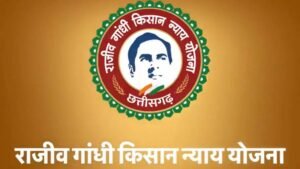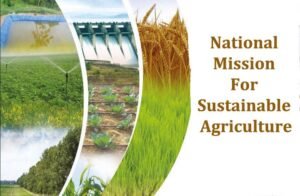Top Agricultural Schemes run by Indian Government
Agriculture is one of the essential sectors of India’s economy, being the backbone of rural communities and also providing food security to the whole country. The government has a major role to play in this sector too as the farmers alone cannot do anything, being burdened so much for the financial needs in their farm. Our Indian government plays a major role in providing help and support to the farmers because the farmer’s welfare is the topmost priority for them.
The Indian government has launched so many schemes for the welfare of the farmers so that they can utilize these schemes and can grow the crops without any burden of financial security. These schemes would also help the farmers to revitalize the agricultural sector and improve their economic conditions. The farmers to take its benefit are required to know all the information about the schemes.
Here in this article we will discuss the top 10 schemes launched by the Indian government to support these farmers.
Importance of Governmental schemes
The farmers have to face a lot of challenges in Agriculture and they require so much initial investment which they cannot fulfill by themselves alone. The governmental schemes help them to a great extent by becoming an aid to their financial problems. The farmers are benefited through these schemes as:
- It helps them to overcome their bad conditions of farming
- It improves their economic conditions
- It helps them solve their financial problems and help them emerge successfully
The government of India had set a target of doubling the farmer’s income by the year 2022 and for this several schemes for farmers were launched from time to time at state and central levels.
Top 10 Government Schemes for Indian Farmers
This scheme was launched on 1st February 2019 which became effective from 1st December 2018, and is popularly known as ‘Pradhan Mantri Kisan Samman Nidhi Yojana’. This scheme provides support to the small and marginal farmers of India who have less than 2 ha of land.

- Benefits:
- This scheme gives ₹6000 per year to the small and marginal farmers having less than 2 ha of land, as a minimum income support
- The cultivators also receive ₹6000 in three installments.
- Goal:
- It provides financial need to these marginal farmers.
- It ensures proper crop health and good yield of the crops.
This scheme was launched by our Prime Minister Narendra Modi on 11 September 2019 to support small and marginal farmers. The farmers falling in the age group of 18-40 years can apply for this scheme. They receive the amount after attaining the age of 60 years. The farmer’s are required to contribute ₹50-200 per month depending upon their entry age until their age of retirement i.e 60 years and after that they receive pensions on an equal basis.

- Benefits:
- It provides a minimum pension of ₹3000 per month to around 5 crore marginal farmers after 60 years of age.
- The government makes an equal contribution to the pension fund to the same amount of tenants.
- The cultivators also receive the same amount of pension.
- Goal:
- It provides social security to the farmers in their old age when they have no income for managing their expenses or livelihood.
This scheme was launched on 18 February 2016 by the PM Narendra Modi. It is a premium based scheme for the farmers in which 21 states implemented in Kharif 2016, 21 states and 2 union territories in Rabi 2016-17. The claims are settled after 2 months of crop harvesting season.

- Benefits:
- The farmers need to pay a maximum premium of 2% for Kharif crops, 1.5% for Rabi & Oilseed crops, and 5% for commercial or horticulture crops. The remaining premium is shared by central & state governments.
- Goal:
- It helps in easy & quick claim settlements.
- It compensates for any damage caused due to floods, storms, hailstones and heavy rains.
This scheme was launched in the year 1998 to provide short term credit to the farmers. The banks that offer KCC are – SBI, HDFC, ICICI, Axis.

- Benefits:
- It gives short term loans to the farmers for purchasing cert equipment and to maintain other expenses
- Goal:
- This scheme was launched to meet the credit requirements of the farmers in the sectors of agriculture, fisheries and animal husbandry.
This scheme was launched on 1st July 2015 with the motto of “Har Khet Ko pani”, with other slogans as “Jal Sanchay”, and “Jal Sinchan”. This scheme was implemented by the Ministries of Land & Water resources and offers irrigation supply like water resources, distribution networks and farm level applications.

- Benefits:
- The farmers get subsidies for irrigation equipment. The cultivators also benefit from it.
- Farmers can earn good income.
- Goal:
- This goal is to spread the water system in every farm improving the use of water proficiently and achieve the aim of ‘More harvest per drop’.
This scheme was launched on 21st May 2020 on the death anniversary of the former Prime Minister by the Chhattisgarh government.

- Benefits:
- ₹1500 crore was credited to the account of more than 18000 farmers which was the first installment of the ₹5750 crore scheme that was launched to benefit the farmers sown in 14 types of crops.
- Goal:
- This ensures minimum income to the farmers who are growing 1 Rabi and 13 Kharif crops in the state.
- This provides empowerment to the farmers.
This scheme was launched in 2014-15 for enhancing agricultural productivity and sustainability.

- Benefits:
- This ensures the empowerment of farmers by increasing the crop output.
- Goal:
- It focuses on soil health management and conservation of resources.
- It aims to promote sustainable and productive agriculture and make the crops climate resistant, with integrated farming practices.
This scheme was launched in 2015. It is an extended scheme of Soil Health Management scheme which worked under the Centrally Sponsored Scheme and National Mission on Sustainable Agriculture. It was implemented to promote organic farming and improve the soil health and organic content in the crops.

- Benefits:
- This scheme targeted 10,000 clusters of 50 acres to cover an area of 5 lakh acres from 2015-16 to 2017-18.
- It was aimed to help the farmers with ₹50,000 /ha, every 3 years for producing organic crops and its certification, labelling, packaging and transportation.
- Goal:
- The goal is to improve the farmer’s income and enhance the agricultural sector by trying to manage the soil and solve organic farming issues.
This scheme is an e-marketing platform which was launched on 14th April 2016 as a pan-India electronic trading portal. The fund for this scheme is raised by the Central government and is implemented by the Small Farmers Agribusiness Association (SFAA). It was started to support the farmers for problems related to infrastructure of the farming, with the slogan of “one nation one market”.

- Benefits:
- It helps in revolutionizing agriculture in India via online platforms.
- It ensures better price discovery.
- It connects all the Agri product marketing committees into one single network.
- Goal:
- It aims to create an e-market platform for transparent sale transactions and price discovery in the country.
- Pashu Kisan Credit Card Scheme
This scheme was launched on 21st September 2020, with Haryana being the first state to implement it and to apply for this credit card, the farmers need to visit their nearest bank.

- Benefits:
- The farmers are given loans to buy cows, buffaloes, goats, etc.
- Goal:
- It aims to increase the animal husbandry business and help the farmers to improve their earnings.
Conclusion
These were the latest and most important agricultural schemes run by the Indian Government. Agriculture is the heart and soul of India as it is the only sector which provides food security to all its peoples. The farmers do a lot of hard work and they input their sweat and blood both in the farm so as to provide us with healthy and quality crops. The government tries to help this sector in every way possible and thus has launched so many schemes for the benefit of the farmers so that they can help us live a sustainable lifestyle.




